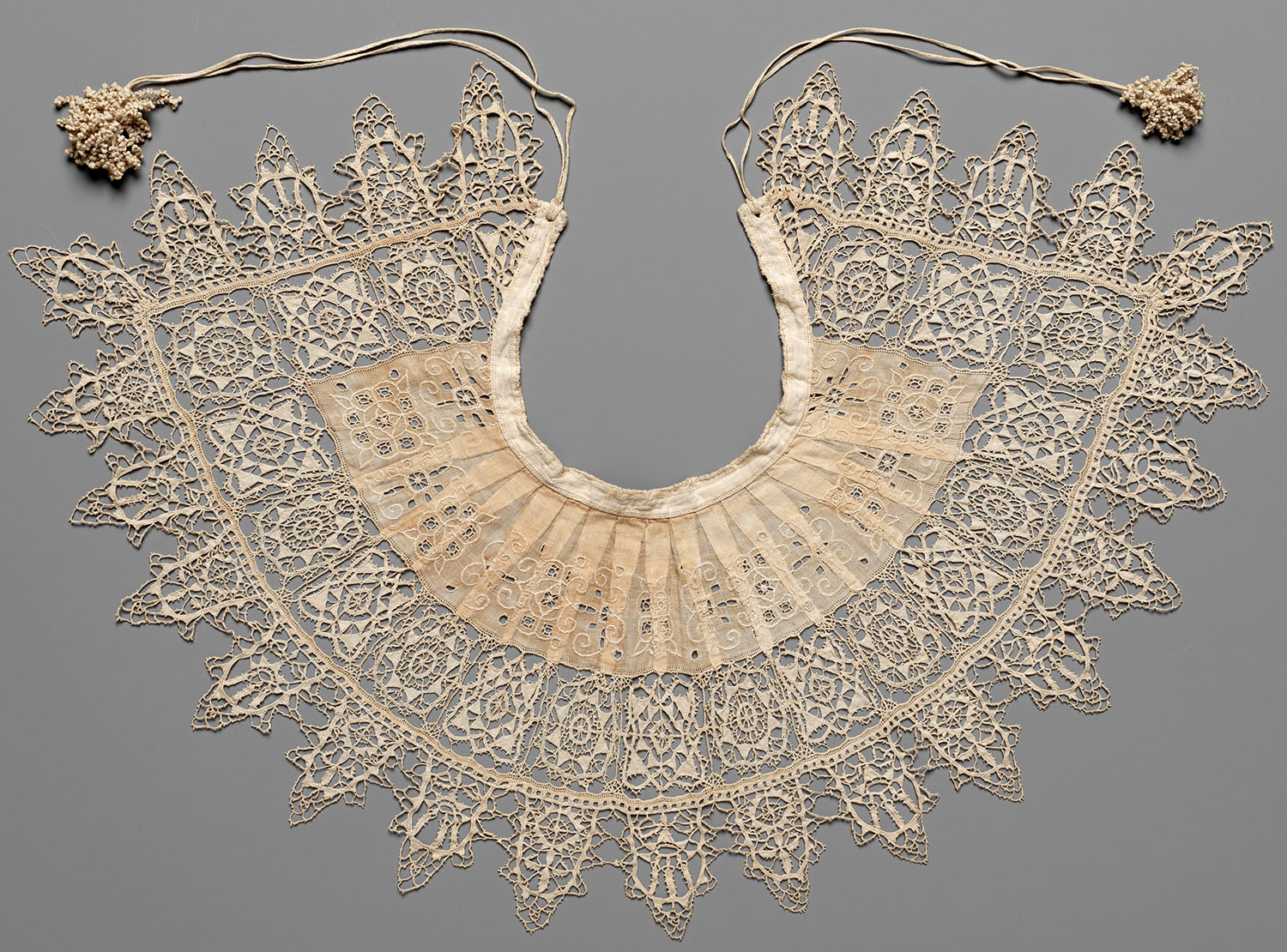ARTICLE
Cutwork
A needlework technique or decorative effect, cutwork involves cutting away sections of fabric in predetermined designs or simple holes and using various embroidery stitches to define or embellish them. The technique is thought to have originated in Italy during the Renaissance period of the fourteenth and fifteenth centuries, where it was termed punto tagliato. A key component of cutwork is the embroidering of the “holes,” by either filling them in or bridging them through needlework. Cutwork, usually done on cotton or linen fabric, has been used for making decorative and fashion textiles, accessories such as handkerchiefs and head coverings and home furnishings such as bed linen, pillow-cases and tablecloths.
Two main forms can be seen in the European tradition of cutwork: In one, the cut-aways or holes form a minor part of the design, as seen in Norwegian Hardanger lace; in the other, and more popular type, the holes form the central elements of the design, such as in the Italian reticella, the Czech-English broderie Anglaise, the French Richelieu and the Danish Hedebo. Believed to have originated in monasteries in Rome and created originally for use by the Church and its clergy, cutwork was popularised in sartorial traditions by Mary Tudor (1516–58) and Elizabeth I (1533–1603) in the sixteenth century. Different regions across Europe had different forms and iterations of the technique adapted to specific purposes and aesthetics. Outside Europe as well, there were forms and variations of cutwork — some that had emerged independently and some influenced by the European forms. In India, the technique is used in the popular embroidery tradition of chikankari and the eyelet embroidery of hakoba.
Chikankari uses a variation of the cutwork technique in its jaali work, which uses needles to push the warp and weft of the fabric apart without cutting into the cloth or drawing out threads, creating an effect of an open mesh. The threads of the cutwork are not drawn through, thereby ensuring that the back of the cloth is undisturbed and that the strength and integrity of the cloth are not compromised. Hakoba employs intricate embroidery, traditionally done with white thread, around small eyelets. In this form of cutwork, the embroidery on the fabric ground is more prominent than the cutwork itself.
Cutwork embroidery began to be mechanised in 1868 with the invention of a hand-embroidery machine that was able to make holes in the fabric and render finishing stitches around the edges. In the 1980s, the industrial schiffli machine was invented, which could embroider complex and intricate patterns in a variety of stitches. The fabric so produced is now widely used in the fashion industry.
Bibliography
Our website is currently undergoing maintenance and re-design, due to which we have had to take down some of our bibliographies. While these will be re-published shortly, you can request references for specific articles by writing to hellomapacademy@map-india.org.







